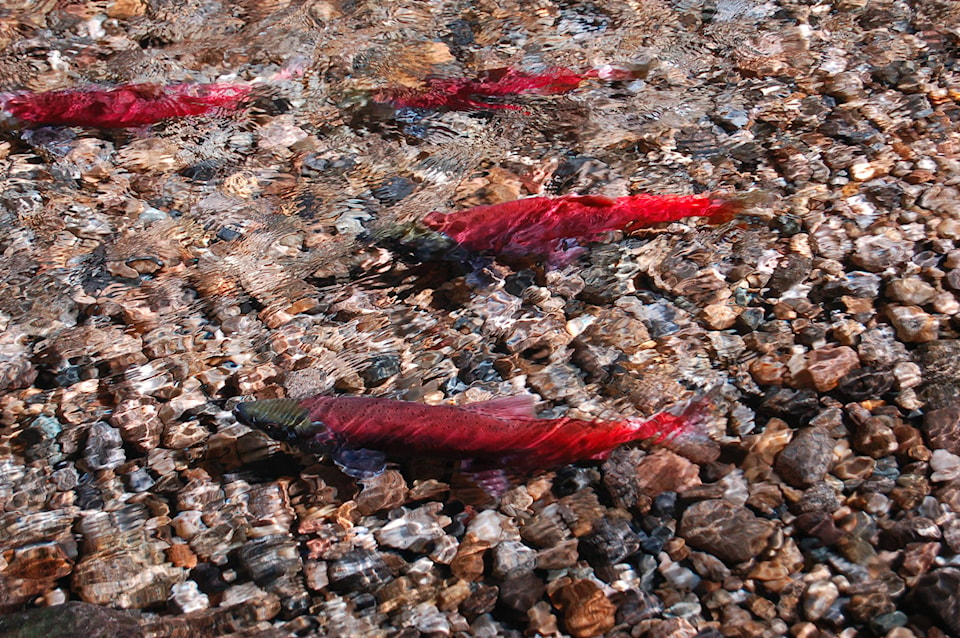Twice this past September I went salmon fishing on the Fraser River.
For a few brief seconds I think I may have had a spring salmon on my line. I felt the tug and then it was gone. All I know is that it felt big. I did, however, have pretty good luck catching sockeye. I kept two really nice bright silver ones. As I cleaned, filleted and vacuum packed them to bring home, I remember thinking to myself that they would likely be the last two I would ever catch and keep. In spite of a fairly large run this year, the sockeye are in trouble, serious trouble. They have been for years.
Even the Adams River run, which Fisheries and Oceans Canada had originally predicted would be upward of 15 million fish this year fell way short.
It will be interesting to see what the final estimated count will be but DFO is already saying it will be considerably less than predicted. Like I said, the sockeye are in trouble.
Related:Column: Difficult to do the right thing
I am torn about fishing for sockeye salmon. On one hand I enjoy catching them when they first come up the Fraser River. I also enjoy eating them.
On the other hand there just aren’t that many left and I cannot in all good conscience keep them for eating anymore.
Over the month of October I made three separate trips to the Adams to see the sockeye, resplendent in their red and green spawning colours, make their way back to the spawning grounds where their lives began.
The first two times, I was impressed at the number of fish returning. The last time – just the other day – as I looked down into the waters of the river, I found it sort of depressing to see all the dead fish in the water and along the banks.
Yes, I know that is a part of the sockeye’s life cycle and that the dead and decaying fish give nourishment and new life and all that sort of thing, but I really did find it a bit depressing this year.
I just couldn’t help but feel that maybe, somehow, the dead and decaying fish might be a foreshadowing of the years to come. Like I said, the sockeye are in trouble.
Related:Column: Fishing for that memorable photograph
However, on a brighter note, if you look into the water of many lakes, rivers and streams, especially in the southern half of the province, you will likely see fish that looks like a smaller version of sockeye– kokanee.
Kokanee salmon (Oncorhynchus nerka) are a non-anadromous form of the sockeye salmon that can be found throughout British Columbia and the Yukon in Canada, as well as the northwestern part of the United States. Kokanee do not migrate to the sea; instead, they live out their entire lives in freshwater. While there is still some debate as to whether the kokanee and its sea-going relative are one and the same or two separate species, geographic isolation, failure to interbreed and genetic distinction would suggest a distinct divergence in the history of the two fish; a divergence that most likely occurred some 15,000 years ago when a large ice-melt created a series of freshwater lakes and rivers across the northern part of North America. While some members of the salmon family (salmonids) went out to sea (anadromous), others stayed behind in fresh water (non-anadromous).
When both occupy the same waters during the spawn, the two populations do not mate together. There is also some morphological divergence between the kokanee and sockeye; most noticeably, a difference in size. Kokanee are smaller than sockeye. As a freshwater-based fish, they are much smaller than sea-going sockeye due to less food availability. Their main food source is plankton. The typical life cycle of the kokanee is similar to that of other salmon.
They are born in a stream and migrate down to a lake where they will spend most of their adult lives. Kokanee typically live for four years in a lake before heading back to their spawning grounds to spawn and die. During spawning, the males turn bright red and develop a humped back and an elongated jaw similar to the male sockeye salmon. The female also turns a dark red hue during the breeding season which corresponds with the breeding season of sockeye. The major difference though between kokanee and sockeye salmon is that there are plenty of kokanee.
In next week’s column I will discuss where and how to catch kokanee.
@SalmonArm
jim.elliot@saobserver.net
Like us on Facebook and follow us on Twitter
